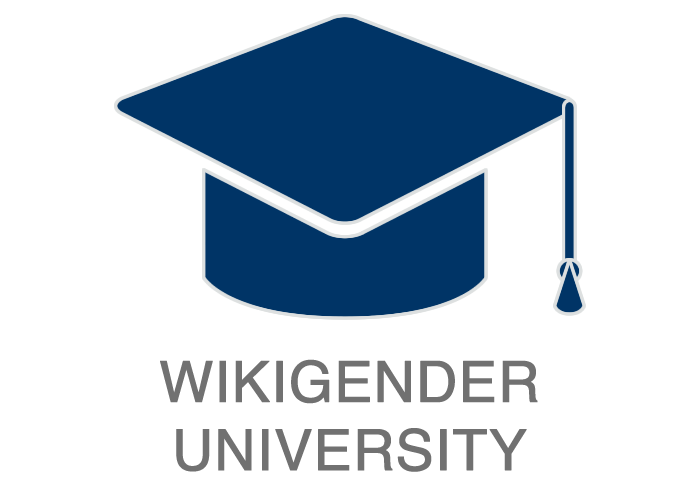Gender Equality Marker System
Revision for “Gender Equality Marker System” created on January 21, 2016 @ 09:22:28
|
Gender Equality Marker System
|
|
<p>
 </p>
</p><div id="toc"><h2>Table of Contents</h2> <ul> <li class="toclevel-1"><a href="#w_the-oecd-dac-gender-equality-marker-gem"><span class="tocnumber">1</span> <span class="toctext">The OECD DAC Gender Equality Marker (GEM)</span></a> <ul> <li class="toclevel-2"><a href="#w_policy-objectives"><span class="tocnumber">1.1</span> <span class="toctext">Policy objectives</span></a></li> <li class="toclevel-2"><a href="#w_how-does-the-gem-work"><span class="tocnumber">1.2</span> <span class="toctext">How does the GEM work?</span></a></li> </ul> </li> <li class="toclevel-1"><a href="#w_the-un-system-gender-equality-marker"><span class="tocnumber">2</span> <span class="toctext">The UN System Gender Equality Marker</span></a></li> <li class="toclevel-1"><a href="#w_references"><span class="tocnumber">3</span> <span class="toctext">References</span></a></li> <li class="toclevel-1"><a href="#w_see-also"><span class="tocnumber">4</span> <span class="toctext">See also</span></a></li> <li class="toclevel-1"><a href="#w_external-links"><span class="tocnumber">5</span> <span class="toctext">External links</span></a></li> </ul> </div><h2 id="w_the-oecd-dac-gender-equality-marker-gem">The OECD DAC Gender Equality Marker (GEM)</h2> <p>The gender marker system was first developed in 2008 by the "Organisation Development Assistance Committee (DAC), in continuation with their policy marker system.<ref>The gender equality marker in EU development cooperation: Gender Equality Marker (ppt) http://capacity4dev.ec.europa.eu/public-gender/document/gender-equality-policy-marker</ref> This marker system allows for monitoring and co-ordination of different Member activities, facilitating continued allignment with DAC policy objectives for aid (other DAC markers include aid to environment, participatory development and good governance).<ref>OECD (2008), "The DAC Gender Equality Policy Marker", http://www.oecd.org/social/gender-development/39903666.pdf</ref> The marker system is qualitative rather than quantitative, identifying activities targeted to a policy objective. </p> <h3 id="w_policy-objectives">Policy objectives</h3> <p>The identification of policy objectives and the consequent data collection is based on a three-tiered marker system, ranging from principal objective to significant objective and finally to not targeted to the policy objective:<ref>OECD (2008), "The DAC Gender Equality Policy Marker", http://www.oecd.org/social/gender-development/39903666.pdf</ref><br /> </p> <dl><dd>1. Principal (primary) policy objectives are those which can be identified as being fundamental in the design and impact of the activity and which are an explicit objective of the activity. They may be selected by answering the question “would the activity have been undertaken without this objective?”.<br /> </dd><dd>2. Significant (secondary) policy objectives are those which, although important, are not one of the principal reasons for undertaking the activity.<br /> </dd><dd>3. The score not targeted means that the activity has been screened against, but was found not be targeted to the policy objective.<ref>OECD (2008), "The DAC Gender Equality Policy Marker", http://www.oecd.org/social/gender-development/39903666.pdf</ref><br /> </dd></dl> <h3 id="w_how-does-the-gem-work">How does the GEM work?</h3> <p>The Gender Equality Marker (GEM) is intended to measure the extent to which intermediate results that use program budgets contribute to the advancement of "gender and women’s empowerment or to the reduction of discrimination and inequalities based on sex.<ref>The Gender Equalty Policy Marker, http://www.oecd.org/investment/stats/37461060.pdf</ref> In order to receive a "principal" or "significant" rating, gender equality must be explicitly promoted in activity documentation through specific measures which: </p> <dl><dd>a) Reduce social, economic or political power inequalities between women and men, girls and boys, ensure that women benefit equally with men from the activity, or compensate for past discrimination;<br /> </dd><dd>or b) Develop or strengthen gender equality or anti-discrimination policies, legislation or institutions.<ref>OECD (2008), "The DAC Gender Equality Policy Marker", http://www.oecd.org/social/gender-development/39903666.pdf</ref> <br /> </dd></dl> <h2 id="w_the-un-system-gender-equality-marker">The UN System Gender Equality Marker</h2> <p>In 2009 a slightly modified version of the OECD DAC GEM was pioneered by the "United within the "United system. Soon after, it was adopted by "United. The UNDP/UNICEF GEM is applied to all intermediate results (IRs) that receive an allocation of program funds in order to assess the extent to which they are expected to advance gender equality (GE). </p><p>Similar to the OECD DAC GEM, every IR is rated against a four-category scale, ranging from 0 (not expected to contribute to Gender Equality in any noticeable way) to 3 (advancing Gender Equality is a principle objective of the result). </p><p>The rating cannot be applied to IRs without indicators.<ref> UNICEF(n.d.), "Guidance Note on the Gender Equality Marker", http://www.unicef.org/gender/gender_57305.html</ref> For a rating of 2 or 3, indicators must explicitly measure progress towards GE. The rating process is conducted during the development of the IR, and is thus expected to sensitize the planning team to account for GE considerations. As such, a secondary aim of the rating of IR is to build awareness among UNICEF staff on the continuation and effects of gender inequalities.<ref> UNICEF(n.d.), "Guidance Note on the Gender Equality Marker", http://www.unicef.org/gender/gender_57305.html</ref> <br /> The Guidance Note for the UNICEF GEM adds that:<br /> </p> <dl><dd><i>"Interventions for boys [where they are disadvantaged] may contribute to gender equality but not necessarily to the empowerment of girls and women. In such situations, specific interventions for boys (or even men) may be considered to contribute to gender equality, and thus could receive a “principal” or “significant” rating."</i><ref> UNICEF(n.d.), "Guidance Note on the Gender Equality Marker", http://www.unicef.org/gender/gender_57305.html</ref> </dd></dl> <h2 id="w_references">References</h2> <p><references/> </p> <h2 id="w_see-also">See also</h2> <ul><li><a href="http://www.wikigender.org/index.php/The_European_Union’s_commitments_and_actions_for_gender_equality_in_development_cooperation" alt="The European Union’s commitments and actions for gender equality in development cooperation">The European Union’s commitments and actions for gender equality in development cooperation</a><br /> </li><li><a href="http://www.wikigender.org/index.php/Progress_of_the_World’s_Women_2008/2009" alt="Progress of the World’s Women 2008/2009">Progress of the World’s Women 2008/2009</a><br /> </li></ul> <h2 id="w_external-links">External links</h2> <ul><li><a href="http://ec.europa.eu/europeaid/what/development-policies/intervention-areas/humandev/genderequ_en.htm" alt="Gender Equality in development cooperation">Gender Equality in development cooperation</a><br /> </li><li><a href="http://www.humanitarianresponse.info/system/files/documents/files/2012%20IASC%20Gender%20Marker%20Full%20Report%20Final.pdf" alt="2012 IASC Gender Marker">2012 IASC Gender Marker</a><br /> </li></ul> <p> </p> |


